The difficult part of a fraud case is usually establishing a defendant knowingly lied — unless, apparently, the defendant is Sam Bankman-Fried.
Technology
Was Sam Bankman-Fried’s bean bag chair a lie too?
Adam Yedidia, Gary Wang, and others involved with FTX and Alameda Research testified in the fraud trial against Sam Bankman-Fried.
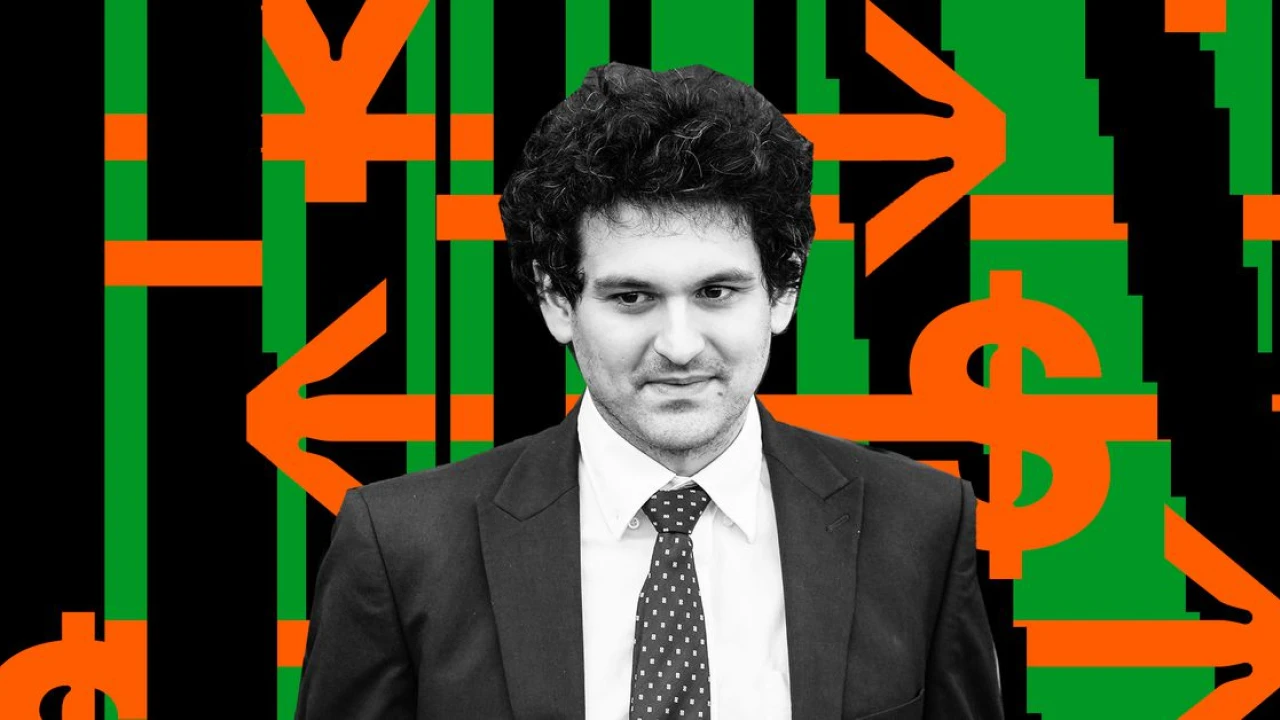
Today the government has made a brisk case for one count in the indictment and is close to making a case for a second one, as two of Bankman-Fried’s college roommates testified against him. We also heard about Bankman-Fried’s love life and bean bag chair.
Yesterday, the prosecution called as its first witness a customer, Marc-Antoine Julliard, who works as a commodities trader. Whether it was smart of him to invest in crypto is sort of irrelevant. The important part of his testimony? As the result of Bankman-Fried’s tweets — “FTX is fine. Assets are fine.” — he did not withdraw his money from the exchange as it went belly-up.
“It’s basically just Alameda paying for it in the end.”
The next witness called, Bankman-Fried’s former college and Bahamas roommate Adam Yedidia, testified that Bankman-Fried knew as early as late June or early July 2022 that the entire enterprise was in trouble. They had the conversation on a padel tennis court in their luxury Bahamas complex, the Albany.
Yedidia was testifying with immunity, because he was worried that as a developer, he might have unwittingly written code that contributed to a crime. He gave the impression of an extraordinarily serious elf, in a suit and glasses, and was a deliberate speaker, taking a beat after questions to think before bobbing his head close to the microphone to answer.
Yedidia worked for Bankman-Fried twice: first as a trader at Alameda Research for two months in 2017 before returning to a PhD program, then from 2021 onward for FTX as a software developer, where he lived — along with Bankman-Fried — in the Orchid, a $35 million penthouse apartment in the Albany. The jury saw photographs of the luxury apartment, which had a cream and gray interior and a gorgeous balcony with a pool.
We also saw a screenshot of a Signal groupchat called “People of the House,” where Bankman-Fried said, “Heh, I’ve been mentally assuming that aggregate rent collected would be zero dollars” and that he had “been assuming that it’s basically just Alameda paying for it in the end.”
Yedidia testified that he quit FTX after getting a phone call telling him that Alameda had used FTX customer funds to repay its loans. He resigned in November 2022, just before FTX went bankrupt.
“I figured Alameda was just holding the money.”
The prosecution used Yedidia’s testimony to introduce some of FTX’s promotional videos that explained how to transfer money from their bank accounts or crypto wallets to FTX, a clever way to show the jury how the financial plumbing worked. For a period of time, customer deposits in the form of wire transfers went to a bank account called “North Dimension,” which was controlled by Alameda Research.
Alameda got the deposits because FTX was having trouble opening a bank account, Yedidia said. FTX didn’t disclose to customers that Alameda was in control of the “North Dimension” account, either. “I figured Alameda was just holding the money,” Yedidia said. He testified it would have raised concerns for him if he’d known that Alameda was spending the money, because that would mean if a customer came to withdraw, their money wouldn’t be there.
Yedidia knew all this because he worked on a process to automate the processing of customer deposits and withdrawals around July 2021. In writing the code, he introduced a bug that made Alameda’s liabilities look larger than they were. The bug was discovered in December 2021, and had exaggerated the liabilities by $500 million. Yedidia fixed it in June 2022; by then, it was exaggerating Alameda’s liabilities by $8 billion.
During that time, Yedidia said he witnessed a meeting between Sam Bankman-Fried, Caroline Ellison, Gary Wang, and Nishad Singh. Singh later told Yedidia that the meeting had been to do a full accounting of Alameda Research and FTX. Everyone in that meeting except Bankman-Fried later pleaded guilty to criminal charges and is cooperating against Bankman-Fried in this case.
In the process of fixing the code, Yedidia discovered that after the bug was caught and the erroneous $8 billion was removed, Alameda was still $8 billion in the hole. That concerned him because “it seemed like a lot of money for Alameda to be owing FTX.” So he asked Bankman-Fried about the money on the padel tennis court.
“We were bulletproof last year, but we’re not bulletproof anymore.”
Yedidia said he asked if things were okay, and Bankman-Fried replied, “We were bulletproof last year, but we’re not bulletproof anymore.” He said Bankman-Fried looked worried while he said it, but he trusted Sam. Besides, he was just a dev — his job was to make sure the code ran well. Other people could handle the money.
At one point, prosecutor Danielle Sasson asked if Bankman-Fried really slept in a bean bag chair. Yedidia said that in the Bahamas, that didn’t happen as often as it had in Hong Kong: “I think he would take occasional naps, but not with much frequency.”
We got some other details on Bankman-Fried’s personal life “Sometime in early 2019, the defendant told me that he and Caroline [Ellison] had had sex and asked if it was a good idea for them to date,” Yedidia said. He told Bankman-Fried it was not a good idea. At the time, she was just a trader at Alameda Research and Bankman-Fried’s subordinate. Later, she would become the co-CEO.
The cross-examination was rough going for the jury, the observers, and the judge, who reprimanded defense counsel Christian Everdell for repeating the same questions the government had just asked. During the meandering cross-examination, Everdell first established that Yedidia didn’t deal with customer money, interact with investors, or otherwise have much contact with FTX’s finances. He tried to coax Yedidia into saying Bankman-Fried didn’t spend much money on himself, and to suggest Yedidia’s immunity agreement may have compromised his testimony.
The main thing Everdell accomplished was teeing Sasson up for an absolutely deadly re-cross. Yedidia explained that in the “bulletproof” conversation, he understood Bankman-Fried to be expressing doubt about Alameda’s ability to repay its customers. He also noted that Bankman-Fried had a second apartment in the Albany, which he did not share with roommates. (He did not say if it contained a bean bag chair.) And though a comment from Yedidia near the end of his testimony — when he said that “FTX defrauded all its customers” — was stricken from the record, the jury certainly heard it.
Following Yedidia, Matt Huang, a co-founder of venture capital firm Paradigm, took the stand. This testimony was similar to Julliard’s, establishing what investors were told by Bankman-Fried, without speaking to what Bankman-Fried knew. Paradigm invested $278 million in FTX in two funding rounds; that investment is worthless now.
Huang was soft-spoken and clearly doing his best to be boring — taking the stand in a fraud trial is the sort of thing that can be very embarrassing for investors. After explaining that Paradigm was primarily focused on cryptocurrencies, Huang gave details on the firm’s investment in FTX in 2021.
Huang says he was told that there was no preferential treatment for Alameda
In the process, Huang had a “handful” of Zooms with Bankman-Fried and met with him four times in person. In considering the investment, Huang said that the company’s team, its market, competitors, and financial information were things he took into consideration. He got some information on FTX from Bankman-Fried himself, in an email shown to the court.
FTX was attractive as an investment because it was growing really fast, Huang said. In a Powerpoint presentation shown by FTX, there was a slide that said FTX was a “custodian.” Huang explained that meant FTX took customer deposits and held them, then processed withdrawals. He said that if he’d known FTX was using customer deposits for its own purposes, he most likely wouldn’t have invested. In crypto, he explained, there was a general expectation that customer deposits weren’t spent.
In an email to Bankman-Fried, Huang noted some concerns Paradigm had. Specifically, the firm was concerned about governance, and the relationship between FTX and Alameda. If Alameda had special access to FTX, customers would want to trade elsewhere if they found out, Huang said. Following that email, Huang says he was told that there was no preferential treatment for Alameda.
We were shown a balance sheet sent by Bankman-Fried to Huang, which showed an annualized net profit of $322 million in 2021, which Huang took to mean that the company had made “about $80 million” in profit that quarter. The balance sheet also showed an annualized set of trading expenses of $63 million, which Huang took to mean that FTX had trading expenses of $15 million in that quarter. He testified that the profits would look artificially high if not all of the expenses were recorded, and that he expected the numbers being shown to him to be generally accurate.
“We gave special privileges to Alameda Research on FTX, which allowed it to withdraw unlimited amounts of funds from the platform, and we lied about this to the public.”
Huang knew there was no board of directors for FTX before he invested, he testified, but that he’d pressed Bankman-Fried to create one. “He told us that he didn’t think investors had that much to add, but he did represent that he would be creating a board at some point,” Huang said.
Huang’s testimony was immediately followed by Bankman-Fried’s alleged co-conspirator (and other former roommate) Gary Wang, who walked stiffly into the courtroom and appeared frankly miserable. Wang was a co-owner of Alameda Research and FTX, as well as the chief technology officer at FTX. Within moments of sitting down, he admitted he’d committed financial crimes and listed the people he’d committed them with: Bankman-Fried, Caroline Ellison, and Nishad Singh.
“We gave special privileges to Alameda Research on FTX, which allowed it to withdraw unlimited amounts of funds from the platform, and we lied about this to the public,” Wang said. Alameda could withdraw unlimited amounts of money — including customer funds. It could place orders on FTX slightly faster than other market-makers. It had a $65 billion line of credit, where other market-makers had, at most, tens of millions. All those privileges were written into the code, which Wang was responsible for.
Wang hasn’t finished his direct testimony and hasn’t sat for cross-examination yet. He could undermine his own credibility, though the prosecution seems to have prepared for that possibility. When Wang testified that Alameda Research had been so named because it obscured that the firm dealt with crypto, making it easier to get a bank account, that testimony was followed by video of Bankman-Fried saying substantially the same thing on a Blockworks podcast. When Wang testified about his ownership stake, we saw documents signed by Bankman-Fried that backed up what he said.
Today alone the prosecutors seem to have the wire fraud case involving FTX customers made, and are close to making the conspiracy to commit securities fraud on investors in FTX. I expect we will hear from more investors and customers, as well as other people to back up Wang and Yedidia’s accounts. But I found Yedidia credible, even likeable, and by placing him immediately after a customer, he underlined that the customer had been lied to. Wang’s testimony immediately following investor testimony accomplished the same thing. I have a hard time seeing how the defense digs itself out of this hole.
-

 Sports 2 days ago
Sports 2 days agoPCB appoints Azhar Ali as head of youth development
-

 Business 1 day ago
Business 1 day agoGold glitters again in Pakistan after global price hike
-

 World 2 days ago
World 2 days agoGuman kills 10 in attack on Sufi shrine in Afghanistan: interior ministry
-
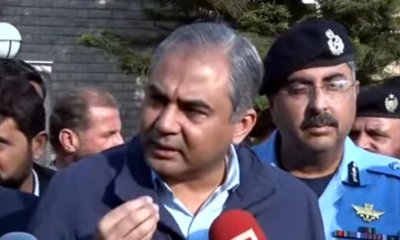
 Pakistan 2 days ago
Pakistan 2 days agoNobody to be allowed to stage sit-in or gathering in capital: Naqvi
-

 World 2 days ago
World 2 days ago'Negligent act': Indian Navy submarine collides with fishing vessel
-
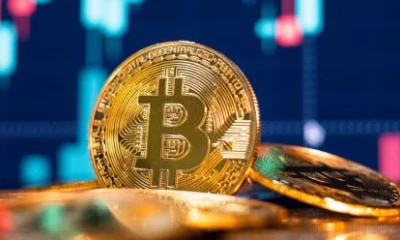
 Technology 2 days ago
Technology 2 days agoCrypto giant Bitcoin touches record high of $100,000
-
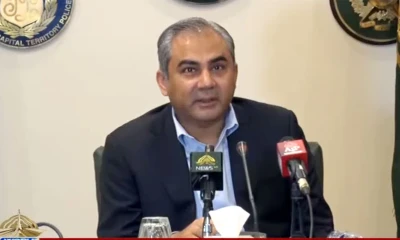
 Pakistan 1 day ago
Pakistan 1 day agoNo protest or rally is allowed in Islamabad, says Naqvi
-
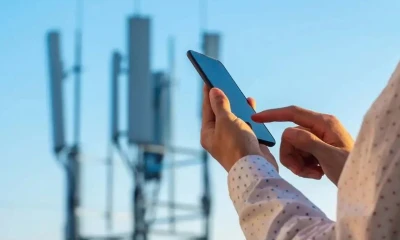
 Pakistan 1 day ago
Pakistan 1 day agoGovt to suspend internet services amid PTI protest






























